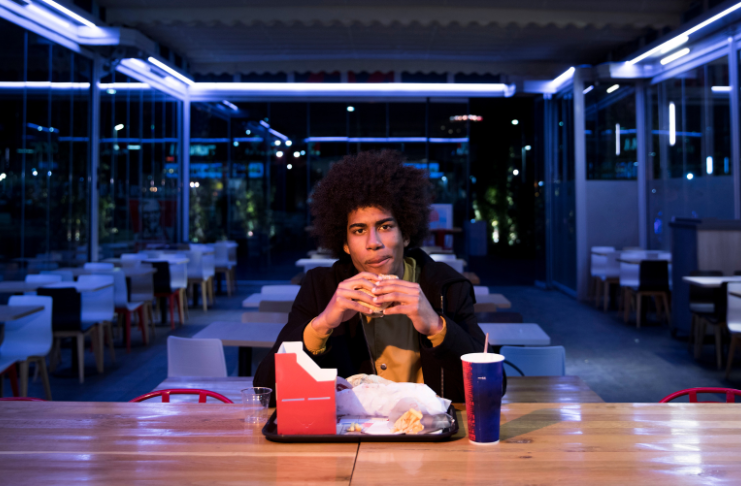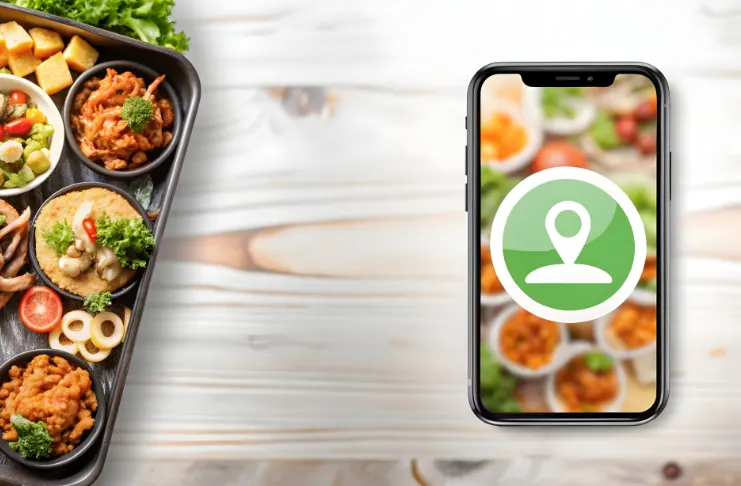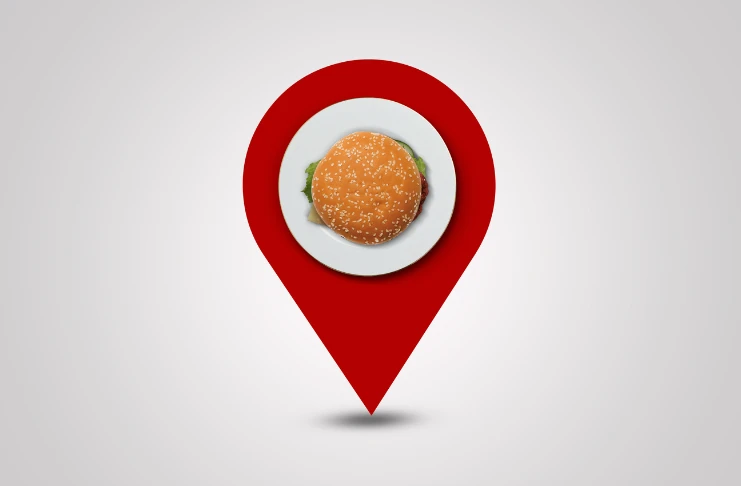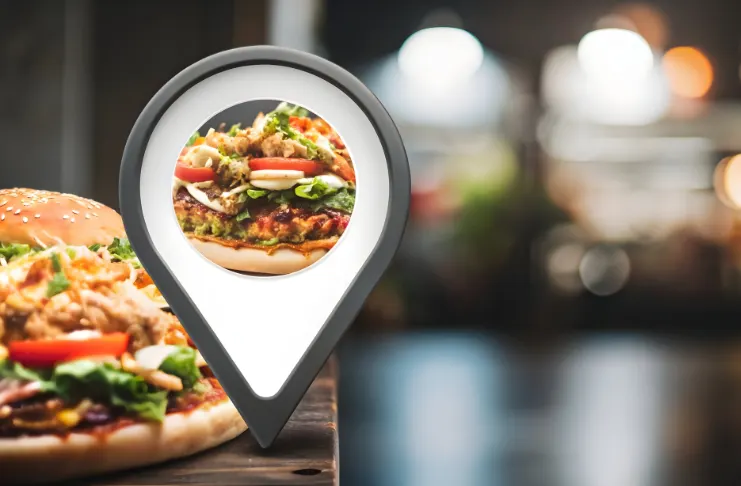Location is often seen as the key to restaurant success, but many face challenges like low foot traffic, poor visibility, or difficult access, especially when they do not have a good location. The good news? A bad location doesn’t have to ruin your restaurant’s potential.
Understanding how to succeed with a bad restaurant location means adopting smart, targeted strategies, which is crucial for restaurant owners. Many restaurants thrive despite location drawbacks by focusing on exceptional customer experiences, strong community ties, and effective marketing.
Implementing proven strategies to overcome poor restaurant location challenges, such as leveraging digital marketing, optimizing restaurant operations, and diversifying revenue streams, can help make a bad restaurant location work.
Understanding the Reality of Poor Restaurant Locations

Poor restaurant locations come in many forms, each presenting unique hurdles. Common challenges include limited street visibility, no parking or adequate parking space, and weak foot traffic. Hidden or remote locations often miss out on spontaneous visits. These require stronger marketing and standout experiences to attract diners.
INDUSTRY INSIGHT
| 74% of diners choose where to eat based on social media content. This means a strong digital presence with engaging photos, reviews, and influencer content can drive traffic and sales, even if a restaurant’s physical location isn’t ideal. |
Even in tough areas, strategic planning and localized tactics can help make a bad restaurant location work, attract more customers, and boost restaurant sales in low-footfall areas.
To overcome poor restaurant location challenges, it’s important to identify your specific issue and apply the right strategies. For example:
- Basement or upper-floor spots need strong signage and a standout ambiance to attract diners.
- Remote or low-traffic areas benefit from delivery services, digital outreach, and local promotions.
Why Location Still Matters
Location affects your restaurant’s visibility and foot traffic, but smart strategies can help you overcome these challenges and attract first-time customers as well as loyal customers. Some key strategies are:
- Build consistent branding to create trust and loyalty despite location challenges.
- Use digital marketing to target audiences and expand your reach online.
- Engage with your community to strengthen relationships and boost repeat visits.
- Offer unique experiences or menu items that encourage customers to seek you out.
With the right branding and digital marketing, even a poor location can become a launching pad for lasting restaurant success.
Strategies to Overcome Poor Restaurant Location

Struggling with low footfall or a hidden location? Smart digital marketing, great customer experience, and strong customer engagement, along with strong community ties, can help you overcome challenges and boost sales.
Maximizing Online Presence and Digital Marketing
When your location limits walk-in traffic, digital marketing is key to boosting restaurant sales in low-footfall areas and reaching new customers online. Here’s how to make a bad restaurant location work with smart digital strategies:
- Optimize your Google and map listings with keywords, photos, and accurate details.
- Use Instagram and Facebook to highlight dishes, ambiance, and reviews for local visibility. 91% of people say local reviews shape their view of big brands
- Send promos and updates via email and text to drive repeat visits.
- Offer delivery through third-party apps and direct online orders to expand reach.
- Post SEO-focused blogs and behind-the-scenes content to increase search visibility.
With the right digital strategy, you can overcome poor restaurant location challenges and build steady traffic, even when footfall is low.
Creating Exceptional Customer Experiences
When footfall is low, an unforgettable dining experience becomes your strongest tool to succeed with a bad restaurant location and drive repeat visits. Some key experience-driven strategies are:
- Train staff to recognize and remember guests, making each visit feel tailored and welcoming.
- Offer signature dishes or niche cuisine that customers can’t find elsewhere, turning your restaurant into a destination.
- Create a memorable atmosphere that reflects your brand and provides comfort, whether cozy, upscale, or quirky.
- Deliver top-tier, good food and no poor service every time to build trust and loyalty.
- Well-trained, enthusiastic staff can elevate the customer journey and overcome physical location drawbacks.
Customer experience is your competitive edge. Focus on delivering exceptional, consistent, and personalized service to make your restaurant worth the trip, no matter the location.
Building Strong Community Connections
When foot traffic is low, creating a memorable and exclusive dining experience is key to succeeding with a bad restaurant location and driving loyalty. Focus on these high-impact strategies:
- Train staff to deliver food and a personalized service.
- Offer signature or niche dishes that make your place a must-visit.
- Build a standout atmosphere that reflects your brand identity.
- Ensure consistent food and service quality to build customer trust.
Exceptional service helps overcome poor restaurant location challenges by turning guests into regulars, proving that great experiences are worth going out of the way for.
Partnering with Local Businesses to Expand Reach
Collaborating with nearby businesses helps make a bad restaurant location work and boosts business in low-footfall areas:
- Cross-promote to access new customer bases.
- Offer exclusive deals for partner business employees or customers.
- Host joint events to increase visibility.
- Share marketing efforts for wider reach.
- Collaborate on community projects to build loyalty.
Partnering locally turns location challenges into opportunities, driving more traffic and boosting your restaurant’s success.
Make a Bad Restaurant Location Work Through Innovation

If your restaurant has a tough location, walk-ins won’t cut it. Use targeted marketing, diversify revenue, and focus on retention to boost sales and build loyalty in low-traffic areas.
Leveraging Restaurant Technology Solutions
Struggling with a bad restaurant location? Smart tech can turn that challenge into an opportunity. Here are key technology strategies to make a bad restaurant location work:
- POS and CRM systems personalize service and boost loyalty with customer insights.
- Mobile apps enable pre-orders, online food delivery, and loyalty rewards for added convenience. 68% of consumers order takeaway multiple times a month, and 67% prefer using a restaurant’s own app or website instead of third-party platforms.
- Wi-Fi marketing collects guest data for targeted promotions.
- VR/AR experiences create buzz and draw customers despite low visibility.
- Automated marketing tools ensure consistent outreach via email, SMS, and social media.
- Online reservation systems make it easy for guests to plan their visit when walk-ins are unlikely.
With innovative technological solutions, you can boost restaurant sales in low footfall areas and build lasting customer relationships—no matter the location.
Optimizing Operations for Success
For restaurants in low-traffic areas, operational efficiency is key to boosting sales and profitability. Smart processes help overcome poor restaurant location challenges by maximizing every customer interaction.
- Streamline service to deliver consistent quality and speed with each order.
- Engineer your menu to spotlight high-margin items while managing food costs.
- Schedule staff smartly around peak and off-peak times to reduce labor waste.
- Manage inventory efficiently to avoid shortages and reduce waste.
- Design your kitchen for flow, even in tight or awkward spaces.
- Control costs regularly by reviewing all expenses for better margins.
By embracing technology and streamlining operations, your restaurant can overcome location challenges, boost sales, and build a loyal customer base, turning low foot traffic into lasting success.
Boost Restaurant Sales in Low Footfall Areas

Effective targeted marketing and customer retention strategies are crucial to make a bad restaurant location work and boost restaurant sales in low-footfall areas.
Targeted Marketing Strategies
When facing a bad restaurant location, targeted marketing and revenue diversification strategies are key to boosting restaurant sales in low-footfall areas. Here are effective tactics to overcome poor restaurant location challenges:
- Use direct mail campaigns to reach local residents with eye-catching offers and promotions that encourage first-time visits.
- Launch referral programs that reward customers who bring friends and family, expanding your customer base through word-of-mouth.
- Offer corporate catering services to generate steady income and introduce your cuisine to new potential diners.
- Host special events like private parties or meetings to fill slow periods and increase revenue streams.
- Implement loyalty programs with rewards (like, free desserts, or free meals) to encourage repeat visits and build strong customer relationships.
- Run seasonal promotions with limited-time offers or themed menus to create urgency and attract customers during slow times.
By combining these strategies to overcome a poor restaurant location, you can make a bad restaurant location work and consistently boost sales despite traffic challenges.
Revenue Diversification
Expanding revenue beyond dine-in is a powerful way to make a bad restaurant location work and maintain steady growth.
- Offer catering services for offices, events, and homes to increase visibility and sales.
- Sell branded merchandise like sauces or apparel to generate extra income and stay top-of-mind.
- Host cooking classes with the head chef to attract new target audiences and build local authority.
- Use food trucks or pop-ups in busy areas to raise brand awareness and drive visits.
- Provide meal kits for at-home dining, appealing to convenience-driven customers.
- Launch private-label products to grow revenue and strengthen your brand in-store or online.
Diversifying your offerings creates multiple income streams, helping your restaurant thrive, even in a challenging location.
Customer Retention Strategies
Strong customer retention is essential to boost restaurant sales in low footfall areas and overcome poor location challenges.
- Send personalized follow-ups like thank-you notes, birthday offers, and anniversary perks to deepen engagement.
- Reward loyalty with VIP treatment, exclusive previews, and complimentary add-ons to make guests feel valued.
- Act on feedback from surveys and reviews to show customers you care and continuously improve.
- Host special celebrations to build emotional connections and create memorable dining experiences.
- Maintain regular contact through emails, texts, and social media to stay top-of-mind.
- Resolve complaints quickly to turn unhappy guests into loyal advocates.
By prioritizing retention, you’ll drive repeat visits and turn location limitations into a strength that fuels long-term growth.
Leveraging Customer Feedback to Improve and Adapt
Customer feedback is essential to adapting your restaurant and succeeding in a bad restaurant location by continuously improving the guest experience.
- Collect feedback through surveys, online reviews, and direct conversations.
- Analyze comments to identify strengths and areas needing improvement.
- Use insights to refine your menu, service, and ambiance for better customer satisfaction.
- Respond promptly to reviews to show you value guest opinions and build trust.
- Implement changes that address common concerns to make a bad restaurant location work.
Implementing these strategies will help you overcome poor restaurant location challenges and drive sustained growth despite low foot traffic.
Long-term Success Strategies

Consistent brand recognition and operational excellence are powerful strategies to make a bad restaurant location work and boost restaurant sales in low-traffic areas.
Building Brand Recognition
Consistent branding and operational excellence are crucial to boost restaurant sales in low footfall areas and make a bad restaurant location work.
- Maintain consistent branding across all touchpoints to build trust when customers go the extra mile to visit.
- Ensure quality consistency in food and service to meet expectations and avoid negative reviews.
- Engage with the local community to build loyalty and become a neighborhood favorite.
- Invest in staff retention and training to deliver reliable, exceptional service despite location drawbacks.
- Manage your online reputation by monitoring reviews and encouraging positive feedback.
- Plan strategic expansion using insights from your current location to guide growth.
Focusing on these strategies strengthens your restaurant’s brand and loyalty, helping you succeed despite location challenges.
Financial Management
Managing finances is vital for restaurants in tough locations with unpredictable revenue.
- Maintain sufficient funds to cover slow periods and invest in growth opportunities.
- Regularly review expenses to control costs without sacrificing quality.
- Plan for seasonal shifts and economic changes to optimize staffing, inventory, and marketing.
- Allocate budgets to high-impact initiatives that attract and retain customers.
- Track customer counts, average spend, and repeat visits to identify growth trends.
- Focus on menu items and services with the best profit margins for sustainable revenue.
Focusing on strong branding and community engagement can help you turn location challenges into a loyal customer base and long-term success.
Measuring Success and Making Adjustments

Effective financial management is vital for restaurants in challenging locations to boost sales and overcome low footfall challenges.
Maintain Strong Cash Flow Reserves
Having sufficient cash reserves is vital for restaurants in tough locations to handle unpredictable revenue and invest in growth.
- Keep enough cash on hand to cover slow business periods
- Use reserves to confidently fund marketing or operational improvements
- Avoid financial strain by planning for unexpected expenses
Strong cash flow reserves provide a financial safety net that supports your restaurant’s stability and growth despite location challenges.
Optimize Cost Structure
Accurate revenue forecasting allows better planning for fluctuating demand typical in low footfall areas.
- Analyze past sales trends to predict seasonal variations
- Adjust staffing and inventory based on projected traffic
- Prepare marketing efforts for slower periods
Revenue forecasting enables smarter resource allocation, boosting sales and operational efficiency.
Forecast Revenue Accurately
Accurate revenue forecasting allows better planning for fluctuating demand typical in low footfall areas.
- Analyze past sales trends to predict seasonal variations
- Adjust staffing and inventory based on projected traffic
- Prepare marketing efforts for slower periods
Revenue forecasting enables smarter resource allocation, boosting sales and operational efficiency.
Prioritize High-Impact Investments
When budgets are tight, invest in initiatives that most effectively attract and retain customers.
- Target marketing campaigns that generate the best ROI
- Improve areas directly influencing customer experience
- Avoid spreading resources too thin across low-impact activities
Focusing investments on high-impact strategies accelerates growth and makes a bad restaurant location work.
Monitor Key Performance Metrics
Tracking essential metrics helps identify strengths and weaknesses, guiding ongoing improvements.
- Measure customer counts and visit frequency
- Track average transaction values to assess sales performance
- Analyze data regularly to spot trends and opportunities
Consistent monitoring of the restaurant’s performance ensures you stay proactive in overcoming location challenges.
Analyze Profitability by Segment
Understanding which products and customers are most profitable guides smart business decisions.
- Identify top-selling, high-margin menu items to promote
- Recognize customer segments that bring repeat business
- Adjust offerings and marketing to focus on profitable areas
By mastering these financial management strategies and refining your restaurant concept, restaurants can turn the challenges of a poor location into opportunities for sustained growth and increased profitability.
Conclusion
Success with a bad restaurant location requires creativity, persistence, and smart strategy. While prime locations have clear advantages, restaurants in tough spots can thrive by delivering exceptional customer experiences, building strong community ties, and using innovative marketing.
With the right strategies and a commitment to excellence—including effective food delivery—you can make a bad location work and build a thriving business that inspires others. Often, the extra effort leads to stronger operations and more loyal customers than relying on location alone.
Frequently Asked Questions
1. How to overcome a bad restaurant location?
You can overcome a bad location by using digital marketing, providing excellent service, engaging with the community, and offering delivery options to attract customers.
2. How important is location for a restaurant?
Location is important, but strong branding, great food, and effective marketing can still drive a restaurant’s success.
3. How do you turn around a failing restaurant?
To turn around a failing restaurant, audit the operations, improve service quality, optimize the menu, and run targeted marketing campaigns.
4. What type of location is best for a restaurant?
The best location has high foot traffic, good visibility, ample parking, and is close to your target customer base.
5. What are the 4 P’s of a restaurant?
The 4 P’s are Product, Price, Place (location), and Promotion.
6. What is the 30/30/30/10 rule for restaurants?
The rule suggests 30% of revenue should cover food costs, 30% should go to labor, 30% to overhead, and 10% should be profit.
7. How to turnaround a failing restaurant?
Identify weak spots, retrain staff, refine the menu, cut unnecessary costs, and relaunch with promotions to attract customers.
8. How to fix a failing restaurant?
Improve the food and service quality, listen to customer feedback, and enhance marketing efforts to bring in more customers.
9. What is the number one reason restaurants fail?
The main reasons restaurants fail are poor financial management and a lack of planning.
10. How to boost sales in a restaurant?
Boost sales by running promotions, upselling, using delivery platforms, and building customer loyalty programs.
11. What is the quickest way to increase sales?
The quickest way is to offer limited-time deals and upsell high-margin menu items.
12. What makes the most profit in a restaurant?
Beverages, especially alcohol, and high-margin signature dishes generate the highest profits.
13. How to increase F&B revenue?
Increase revenue by adjusting pricing strategies, expanding catering or delivery services, and offering special events or classes.





